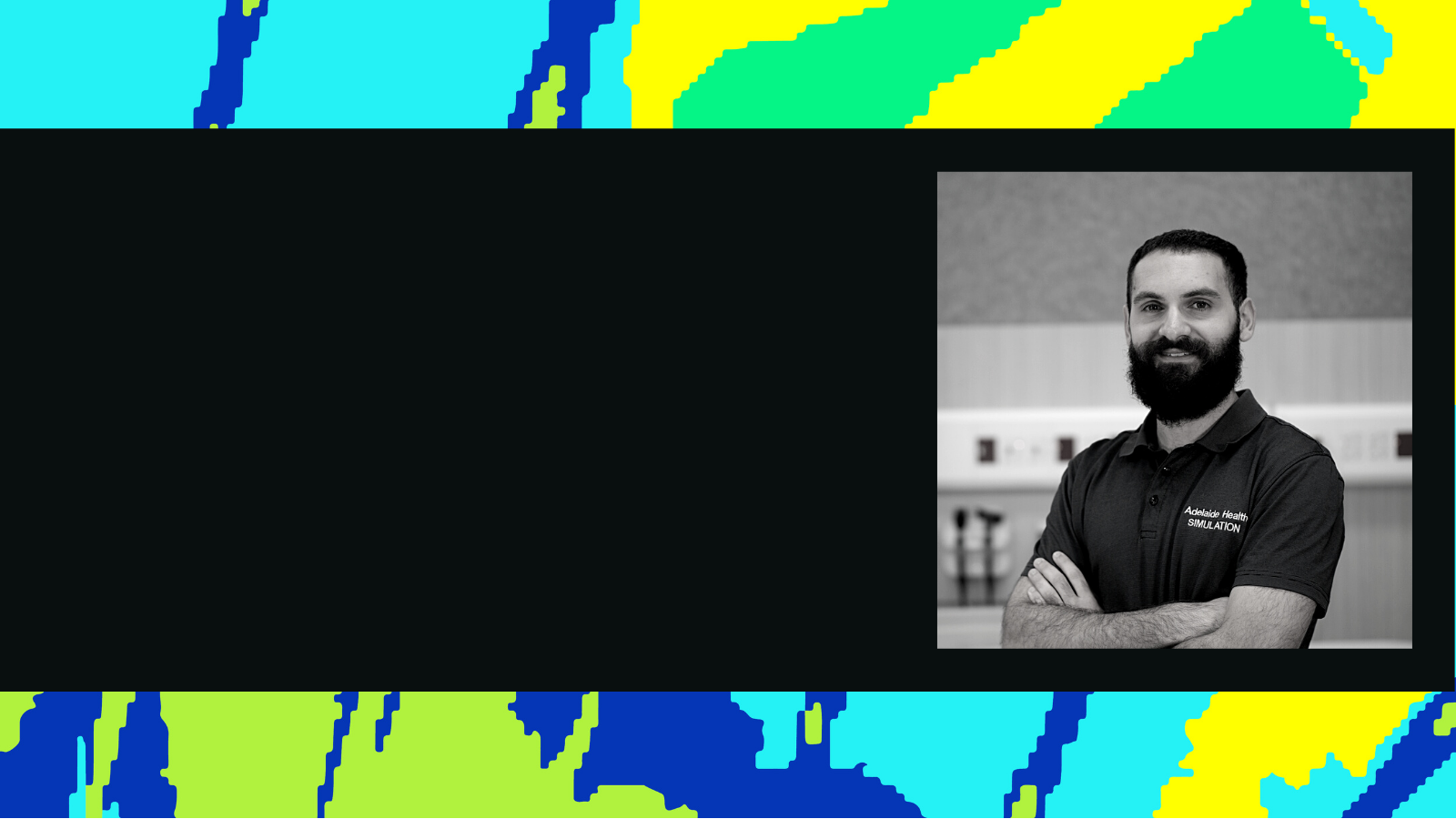Posted 10 May

Words by Walter Marsh.
Justin De Blasio describes his workplace as a “pretend hospital”. But even though a typical patient list consists of actors and sophisticated human replicas, its impact on the emerging challenges faced by healthcare workers is far from fake.
“We’re pretty much acting to produce the scenarios you would see in a clinical environment, so that when students do go into that environment… they don’t get a shock,” Justin, a Simulation Technician at the University of Adelaide’s Health Simulation unit, explains.
“The big advantage of simulation is that it reduces the level of danger to patients. A long time ago, 25-plus years, students coming through the undergraduate programs in universities were pretty much practicing on patients.”
Where student doctors and healthcare workers once visited real patients and hospitals to hone important skills like taking blood, learning patient histories, and performing ECG heart rhythm checks, simulation can provide a safe environment where specialised equipment and ‘standardised patients’ (i.e. actors) are deployed, so students can learn by trial and error with much lower stakes.
“It also provides an environment for students that encourages failure, so they can learn all the areas, they can make mistakes, and refine their skills so that when they do go into practice and work with real patients, they can be confident in their skills and abilities.”
In some instances, that can look like something reminiscent of Seinfeld.
“If we focus on skills, say, taking blood from standardised patients, they’re essentially paid actors. They’re not sick, they’re perfectly healthy, but they have a case or patient scripts — as if they were playing a role in a movie. Then they act how we want them to act in order to display the characteristics that a certain patient would have, so students are able to have, essentially, a standard environment act they’re able to diagnose a patient in.
“A few of my technical colleagues are trained actors — they can simulate a seizure and it looks real. It comes down to the buy-in factor, obviously, and the level of expertise the students have. We can go anywhere from a first year nursing student to a Fellow in orthopaedics — you’ve got to try and put that level of realism in perspective.
In other cases, more complex solutions are required — such as the use of ‘advanced patient simulators’. “[They’re] essentially robots, in a sense,” he says. “They breathe, talk, have heart rhythms, you’re able to take blood from them, they seize, they do everything that a potential patient would… the only thing is that it doesn’t look real.
“But it does allow us to do things you wouldn’t be able to a real person in a safe way,” he adds. “If a patient was to go into cardio arrest… we can’t ask an actor to do that on the spot.”
For De Blasio, virtual reality also presents exciting new possibilities to use emerging technologies to help doctors improve their human-to-human skills.
“VR can deliver a sense of empathy from the patient’s perspective — so you can be the patient,” he explains. “For instance, me, I’m male in my late-20s, I don’t know how an 80-year-old with degenerative eyesight, hearing and maybe some other conditions might experience being in a hospital, and offered care. Or if English wasn’t your first language, and you’re speaking in your own language, of your homeland but you’ve got someone speaking to you in a completely different language — how would you feel?”
In addition to working within their unit at the University of Adelaide, Di Blasio and his colleagues work with local health networks and hospitals to complement their own on-the-ground training and preparation as new challenges arise — like a once-in-a-century global pandemic.
“To give you a real-life scenario, when the first COVID-19 lockdowns kicked in here in South Australia, we were working with the Royal Adelaide Hospital with some scenarios about how they could workshop that, and deliver education to their colleagues.
“We’ve got hundreds of thousands of dollars worth of equipment here, that can do an array of things. So it’s a bit of a playground, I would say, in terms of what you can and can’t achieve. The technicians essentially direct the academics as to what would be the best things to use in order to achieve the outcomes they’re doing.”
For De Blasio, who studied a Bachelor of Mechanical Engineering before pursuing a Bachelor of Design, the wide variation of scenarios, and different ways that this “playground” of equipment can be configured, allows him to put the idea of ‘human-centred design’ into effect. Because whatever new problems emerge, the goal of looking after people remains the same.
“In my design program, they said ‘hey, we’re designing for people’,” he says. “It really enabled me to go try things without worrying about failing. Because part of the design process is iteration, and failure’s a part of that — you don’t learn without failure.”